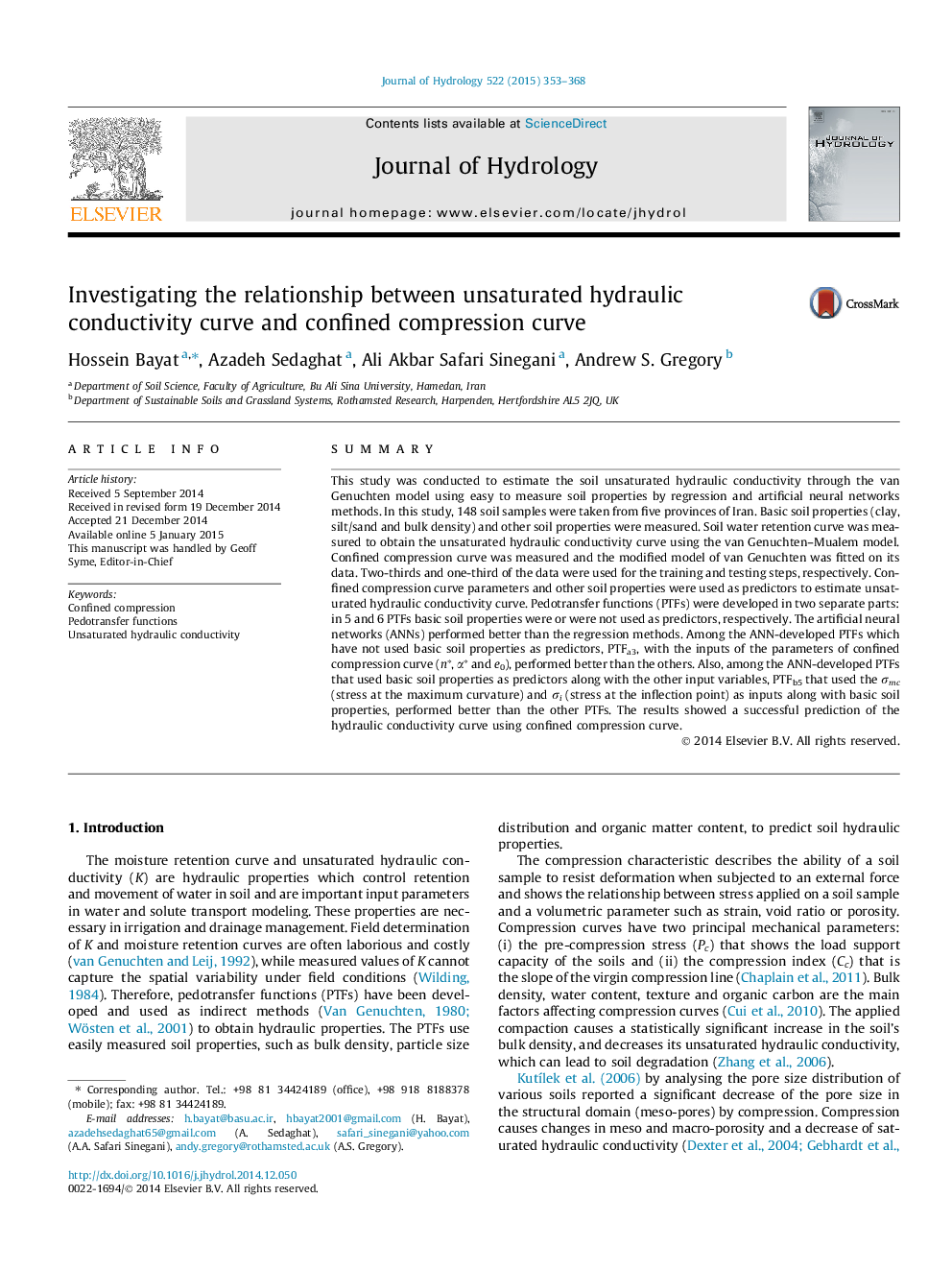| Article ID | Journal | Published Year | Pages | File Type |
|---|---|---|---|---|
| 6411314 | Journal of Hydrology | 2015 | 16 Pages |
â¢Confined compression curve was related to hydraulic conductivity curve, closely.â¢Using confined compression curve parameters improved the precision of PTFs.â¢Using Ïmc and Ïi as inputs improved the estimation of hydraulic conductivity.â¢Gompertz model of compression curve can be related to the hydraulic conductivity.
SummaryThis study was conducted to estimate the soil unsaturated hydraulic conductivity through the van Genuchten model using easy to measure soil properties by regression and artificial neural networks methods. In this study, 148 soil samples were taken from five provinces of Iran. Basic soil properties (clay, silt/sand and bulk density) and other soil properties were measured. Soil water retention curve was measured to obtain the unsaturated hydraulic conductivity curve using the van Genuchten-Mualem model. Confined compression curve was measured and the modified model of van Genuchten was fitted on its data. Two-thirds and one-third of the data were used for the training and testing steps, respectively. Confined compression curve parameters and other soil properties were used as predictors to estimate unsaturated hydraulic conductivity curve. Pedotransfer functions (PTFs) were developed in two separate parts: in 5 and 6 PTFs basic soil properties were or were not used as predictors, respectively. The artificial neural networks (ANNs) performed better than the regression methods. Among the ANN-developed PTFs which have not used basic soil properties as predictors, PTFa3, with the inputs of the parameters of confined compression curve (nâ, αâ and e0), performed better than the others. Also, among the ANN-developed PTFs that used basic soil properties as predictors along with the other input variables, PTFb5 that used the Ïmc (stress at the maximum curvature) and Ïi (stress at the inflection point) as inputs along with basic soil properties, performed better than the other PTFs. The results showed a successful prediction of the hydraulic conductivity curve using confined compression curve.
